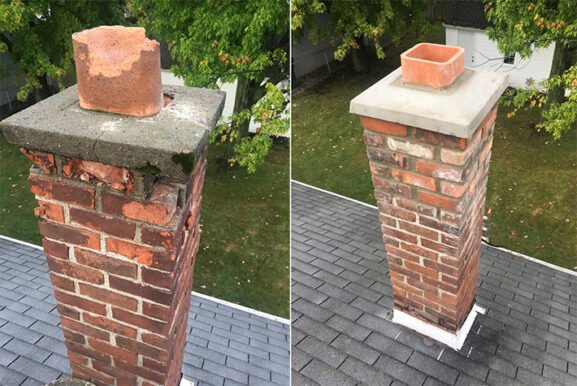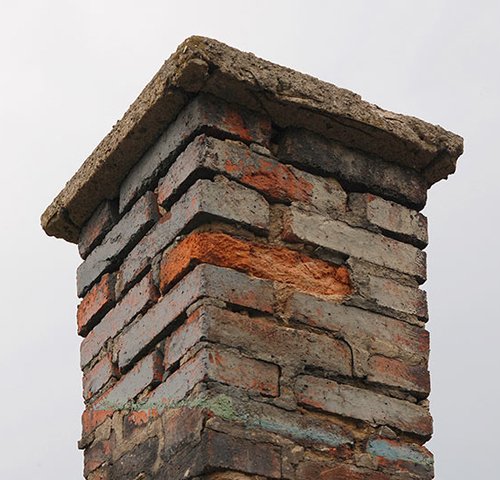How Much Does It Really Cost to Repair a Chimney in Today’s Market
Key Takeaways
- Chimney repair costs vary based on the type of damage, materials needed, and local labor rates
- Delaying chimney repairs can lead to larger structural problems and higher expenses
- Regional weather conditions and building codes play a significant role in cost estimates
- Regular inspections help catch small issues before they become major, expensive repairs
Why Chimney Repairs Are Not One-Size-Fits-All
The cost to repair a chimney isn’t a flat number you can pin down without considering several factors. Each chimney has its own story—whether it’s decades-old brickwork crumbling from freeze-thaw cycles or a newer flue system suffering from installation errors. That’s why estimates can range anywhere from a few hundred dollars for minor joint work to several thousand for full structural restorations.
Variables such as chimney height, accessibility, type of materials, and extent of damage all contribute to pricing. For example, a one-story home with minor mortar damage will cost significantly less to repair than a multi-story home with a cracked chimney crown and deteriorating liner.
Common Types of Chimney Repairs and Their Average Costs
Understanding the different types of repairs can give you a clearer picture of where your money is going. Here’s a breakdown of the most common repairs and their typical cost ranges:
Tuckpointing or Repointing
When mortar between the bricks begins to deteriorate, tuckpointing becomes necessary. This process involves grinding out the old mortar and replacing it with new mortar to maintain structural integrity.
Average cost: $500 to $2,500, depending on the extent of the work.
Chimney Crown Repair or Replacement
The crown is the top cement part that protects the chimney from rain and moisture. Cracks here can lead to leaks and internal damage.
Average cost: $300 to $1,500 for patching, and up to $3,000 for a full replacement.
Flue or Liner Replacement
The flue liner protects the chimney walls and aids proper venting. If damaged, it poses serious safety risks.
Average cost: $2,500 to $5,000, depending on the liner material (stainless steel, clay, or cast-in-place).
Flashing Repair
Flashing is the metal strip that seals the gap between the chimney and roof. Damaged flashing can cause roof leaks and mold issues.
Average cost: $200 to $750.
Brick or Masonry Repair
Spalling bricks, bulging walls, or partial collapse may require rebuilding sections of the chimney.
Average cost: $1,000 to $4,000 based on severity and labor.
Regional Factors That Influence Chimney Repair Pricing
Where you live significantly affects repair costs. Urban areas tend to have higher labor and permit fees, while rural regions might offer more affordable services. For example, homeowners in New York or New Jersey may face higher pricing due to stricter building codes, insurance requirements, and the prevalence of older homes with complex chimney structures.
Additionally, weather conditions in the Northeast contribute to faster deterioration. Freeze-thaw cycles cause water trapped in bricks to expand and crack, leading to more frequent maintenance. These climate-related factors increase the likelihood of masonry damage and, therefore, elevate repair costs over time.
The Role of Inspections in Controlling Long-Term Costs
Professional chimney inspections play a critical role in keeping repair expenses manageable. A Level 1 inspection, which visually examines accessible areas, is often included in annual chimney maintenance. More detailed Level 2 inspections are required when changes are made to the system or after a chimney fire.
Early detection of small cracks or flashing problems can save homeowners thousands of dollars in major repairs later. The Chimney Safety Institute of America (CSIA) recommends annual inspections regardless of how often you use your fireplace.
Hidden Costs That Homeowners Should Prepare For
While most repair quotes include labor and materials, there are often additional expenses to consider. These may include:
- Permit fees: Required in many municipalities before beginning chimney repairs
- Scaffolding or equipment rentals: Necessary for taller structures or hard-to-reach chimneys
- Debris removal and cleanup: Especially for extensive masonry jobs
- Waterproofing sealants: Often recommended after masonry repairs to extend the chimney’s lifespan
These hidden costs can add several hundred dollars to your final bill, so it’s important to ask for a detailed written estimate before work begins.
How to Make Cost-Effective Decisions About Repairs
Not every chimney issue requires immediate full-scale repair. In many cases, interim solutions can be used to mitigate damage while you budget for larger work. For example, minor crown cracks can be sealed with an elastomeric coating to buy time before a full replacement is needed.
When assessing quotes, don’t default to the lowest bidder. Consider whether the company uses high-quality materials, if the technicians are certified, and whether there’s a warranty for the work. Cheap materials or shortcuts could mean paying more down the road.
It’s also wise to prioritize repairs based on risk. Anything affecting structural integrity, carbon monoxide containment, or water entry should be addressed first. Cosmetic repairs, while still important, can often wait.
Final Thoughts on Budgeting for Chimney Repairs
Approaching chimney maintenance with a proactive mindset can save you substantial money in the long run. Even if your chimney appears in good shape, routine checks can uncover early signs of damage that are cheaper to fix when caught early.
Given the wide range of repair types and regional factors, it’s best to work with a certified chimney professional who can assess your specific situation. Be sure to ask detailed questions, request itemized estimates, and verify certifications. This ensures you get the best value without sacrificing safety or quality.
If you’re living in an area with extreme weather or an older home, annual chimney evaluations are more than just routine—they’re an investment in preventing costly damage. Proper maintenance isn’t just about comfort. It’s about keeping your home safe and structurally sound for years to come.

